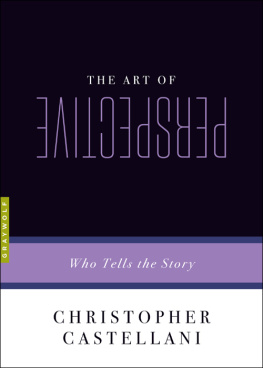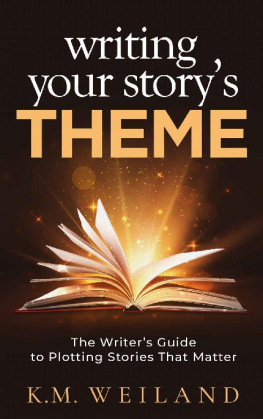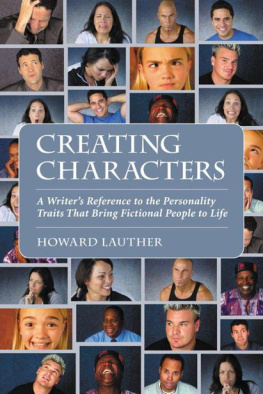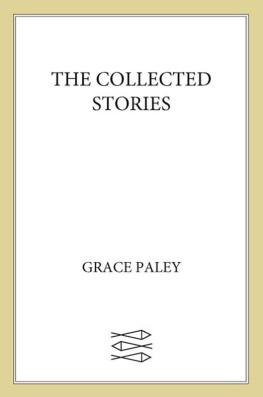The Art of series is a line of books reinvigorating the practice of craft and criticism. Each book is a brief, witty, and useful exploration of fiction, nonfiction, or poetry by a writer impassioned by a singular craft issue. The Art of volumes provide a series of sustained examinations of key, but sometimes neglected, aspects of creative writing by some of contemporary literatures finest practitioners.
The Art of Recklessness: Poetry as Assertive Force and Contradiction by Dean Young
The Art of
PERSPECTIVE
WHO TELLS THE STORY
Christopher Castellani
Graywolf Press
Copyright 2016 by Christopher Castellani
This publication is made possible, in part, by the voters of Minnesota through a Minnesota State Arts Board Operating Support grant, thanks to a legislative appropriation from the arts and cultural heritage fund, and through a grant from the Wells Fargo Foundation Minnesota. Significant support has also been provided by Target, the McKnight Foundation, the Amazon Literary Partnership, and other generous contributions from foundations, corporations, and individuals. To these organizations and individuals we offer our heartfelt thanks.

Published by Graywolf Press
250 Third Avenue North, Suite 600
Minneapolis, Minnesota 55401
All rights reserved.
www.graywolfpress.org
Published in the United States of America
ISBN 978-1-55597-726-9
Ebook ISBN 978-1-55597-915-7
2 4 6 8 9 7 5 3 1
First Graywolf Printing, 2016
Library of Congress Control Number: 2015952174
Cover design: Scott Sorenson
for Michael
Each of us narrates our life as it suits us.
Elena Ferrante
THE ART OF
PERSPECTIVE
WHO TELLS THE STORY
Introduction: To Seeing Each Other Again
I want to tell you what happened on the way to dinner. My husband and I were walking down Thirteenth Street in Philadelphia toward an upscale Italian BYOB. In one hand I carried a decent bottle of wine, in the other, my phone, to check directions. We both wore jackets and ties. Michaels shoes were new and, in my opinion, overpriced, but I didnt want to pick a fight. This was an arrivederci dinner. The next morning, Michael would fly home to Boston, and I would stay on in the Philly area to teach for the semester.
Though wed spent months apart in the past, this time felt different. Middle age was messing with our heads. In the past few years, as if on cue, too many of our loved ones had divorced, or fallen seriously ill, or died. As lives went haywire around us, wed come to regard each others physical presence with a kind of wonder, dazzled by our very solidness. Just a week before, Michael had wept at our dining room table after finishing James Salters Light Years.
I want so badly for you to know how it felt to walk beside him at that moment, in all its unrepeatable particularity. It matters that it was the Sunday of Labor Day weekend, a night of familiar wistfulness and languor and rapidly knotting anxiety; that the air was steamy but the sidewalks cool from a sudden afternoon rain; that most of the city was still down the shore (as one says in the region), which added to the sense of emptiness; that Michael and I had been together exactly fourteen years, one month, and three days; that even though we were in Phillys so-called Gayborhood, with rainbows painted onto the street signs, we were still too nervous to hold hands; and that, as we crossed Locust, a woman approached us.
Can I walk with youse guys? she asked, though she was already matching us step for step. Pretend like were together?
We looked at each other. Um, sure.
She seemed, in a word, crazy. She had a weathered, scarred face, blond hair stringy and frizzed, and the worn-down upper teeth of a druggie. She wore jeans, a yellow windbreaker, and torn-up sneakers. Everybody on this street hates me, she said, clutching the multiple plastic bags she carried in both hands. Thirteenth Street. This whole fucking neighborhood. Im scared to walk by myself. Youre my guardian angels.
She kept up with us, talking nonstop, inching closer as we veered away. We werent afraid of her, exactly, but the streets were unlit, and the buildings closed, and, by any objective assessment, this was a troubled person. Where was she headed? Would she make a scene in front of the restaurant? Demand money? Offer sex? Would she ruin our last night together?
I blew my brains out on cocaine in the 70s, she said, and then, with girlish buoyancy, she went on to describe the limitless freedom of that now-distant age, the wild parties that lasted into mornings, the friends who lived in the brownstones that surrounded us. All of these friendsmostly gay men, she made clear, some of whom were her loverswere dead now. Those who were left were out to get her. They had a score to settle, though she never made its terms clear. Looking at the dark brownstones with alternating fondness and disgust, she said, Nothings like it used to be.
Whose story is this now? I thought I was telling it, that it was mine. Mine and Michaels. But this woman hijacked it. A block before the restaurant, she dashed off unannounced down an alley toward a lit-up church that might have been a mission. She never told us her name. Maybe its her story. Or maybe this isnt a story at all, but an incident. A tangent. A few lines in a journal. And yet its stayed with me. What, if anything, is it actually about?
Every student of fiction writing has been taught E. M. Forsters distinction between story and plot. In Forsters formulation, a story is a sequence of events linked merely by chronology: two men walk down a street, and then a paranoid woman walks with them for a while, and then the two men have dinner, and then the next day they say a poignant good-bye. In this story, you can rearrange the events and nothing truly essential will change. A plot, on the other hand, is a sequence of events whose relationship to each other is determined by causality: two men walk down a street, and because they remind her of men she once knew, a paranoid woman chooses them to walk with for a while for safety; shaken by the encounter in ways he cant quite express, one man begs the other over dinner not to fly home to Boston the next day; the other man promises to stay, but then, the next day, leaves anyway.
Of course, neither of these tales qualifies as riveting, but the latter is inarguably more interesting and less arbitrary than the former. Causality has given it meaning and context, what another essential writing teacher, Vivian Gornick, calls the situation. To confuse matters, Gornick makes the distinction between a situation and her own definition of story , which is different from Forsters. According to Gornick, the story is the emotional experience that preoccupies the writer: the insight, the wisdom, the thing one has come to say. So, here, the situation is a late summer night in Philly, where two lovers are about to part; and the story iswell, I dont know the story yet.













